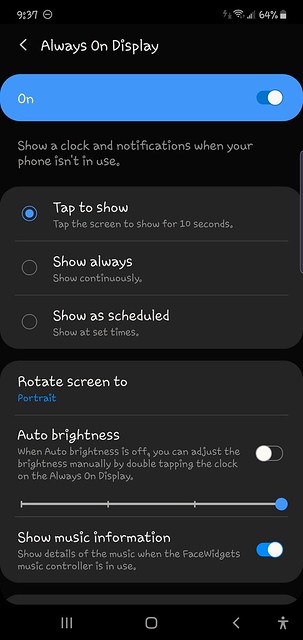Failed error sending sms
- By Jude14352
- Smartphones
- 0 Replies
Is there a known issue with the new update and not being able to send out texts?? I have been having this issue for days now, Sprint doesn't have a clue....
Follow along with the video below to see how to install our site as a web app on your home screen.
Note: This feature may not be available in some browsers.
Did you get an iOttie mount? How is it doing?
yes and no......the iottie i order turned out to the nonwireless version. i need to send it back and get the right one.
however, the one that i have now actually does work. the issue that i have is that the phonegets quite hot while charging and i get a popup message saying that the charging is paused because the phone is too hot. i have to scoot the phone a bit so that the charging plates are not in contact and let the phone cool down. this does not happen a lot, but enough to annoy me.
More details about your specific problem would be helpful, it might also help if you created your own posting that states as much relevant info that you can think of.NOT WORKING....
Stock android doesn't automatically update you in the first place. It will notify you of updates, but won't apply them unless you tell it to.
Some US carriers force updates. Whether Xiaomi do as well I don't know.
BTW just for clarity you have Xiaomi's stock ROM, but probably not "stock android" (i.e. AOSP). It will contain Xiaomi modifications, as essentially all phones have manufacturer mods of varying degrees. Just saying as the phrase "stock android" has a definite meaning and so using it to describe a manufacturer ROM can cause confusion.
The silent mode through notification bar, I do understand that is for ringtone only, that is why I am asking how to AUTOMATIC lower the media volume.
To simplify, I want my phone to have no sound when incoming call/sms and no sound during starting of playing video/media unless I manually increase the media volume.
Oh, damn it! You're making too much sense.She's a software developer. Sometimes you do need to meet with the clients. A client often wants you to see their company in person and a face to face helps secure a contract. She's also just starting her company and probably just wants to learn the ropes first and gain some experience before going global.
She's doing it right in my books.



no worries.....maybe it is time for an upgrade....lolThank you
well if you tripped FRP (factory reset Protection) then you will need to find a way to change the password. just go to google and then go through the forget password process. there is no way around frp unfortunately.Forgot my recovery protection password
I transferred everything from my Note 8 phone to my new Tab S5E (with the Smart Switch app)
The wallpaper from the phone (my own "aurora" image) came over to the Tab.
I want to find and save that aurora image so that I can play with other wallpapers, and be able to put the image back again if I want to.
I can't find the aurora image.
So, I'll ask, where are the wallpaper images stored? (and are they .JPGs?)
(Or, how can I download a copy of the existing wallpaper? and existing lock screen background image?)
Also, how do I set an image for the lock screen that's different from the main wallpaper?
Many thanks in advance,
Carl
Hi all,
Thanks to you all for your contributions. First, Gecko, the blurb for the product you suggest says "Designed to work with both Windows and Mac." No mention of Android.
Danny - I note that the A5 has a card slot and am using it for a 32GB card already. I'm thinking about an external drive because I could also use it with my Samsung tablet as well as it being a secondary back up.
Hadron - Silly me! I was thinking about the external drive in terms of a memory stick; I'd forgotten about the power requirements. Would a SSD version overcome this issue? I note that the Sandisk product suggested by Danny is of this type. Could it work with a PC and an Android device, though?
Thanks again all. I suppose that in the worst case I could buy a 256GB card for the card slot, which the A5 data sheet says it could accommodate. I could then manually swap between phone and tablet. Price-wise, it would be a better bet than an external drive.
i think of you do a side by side picture of the same thing you get a better feel. but judging by that pic.....i'd say that it is pretty good. i mean, it is no cannon dslr.
